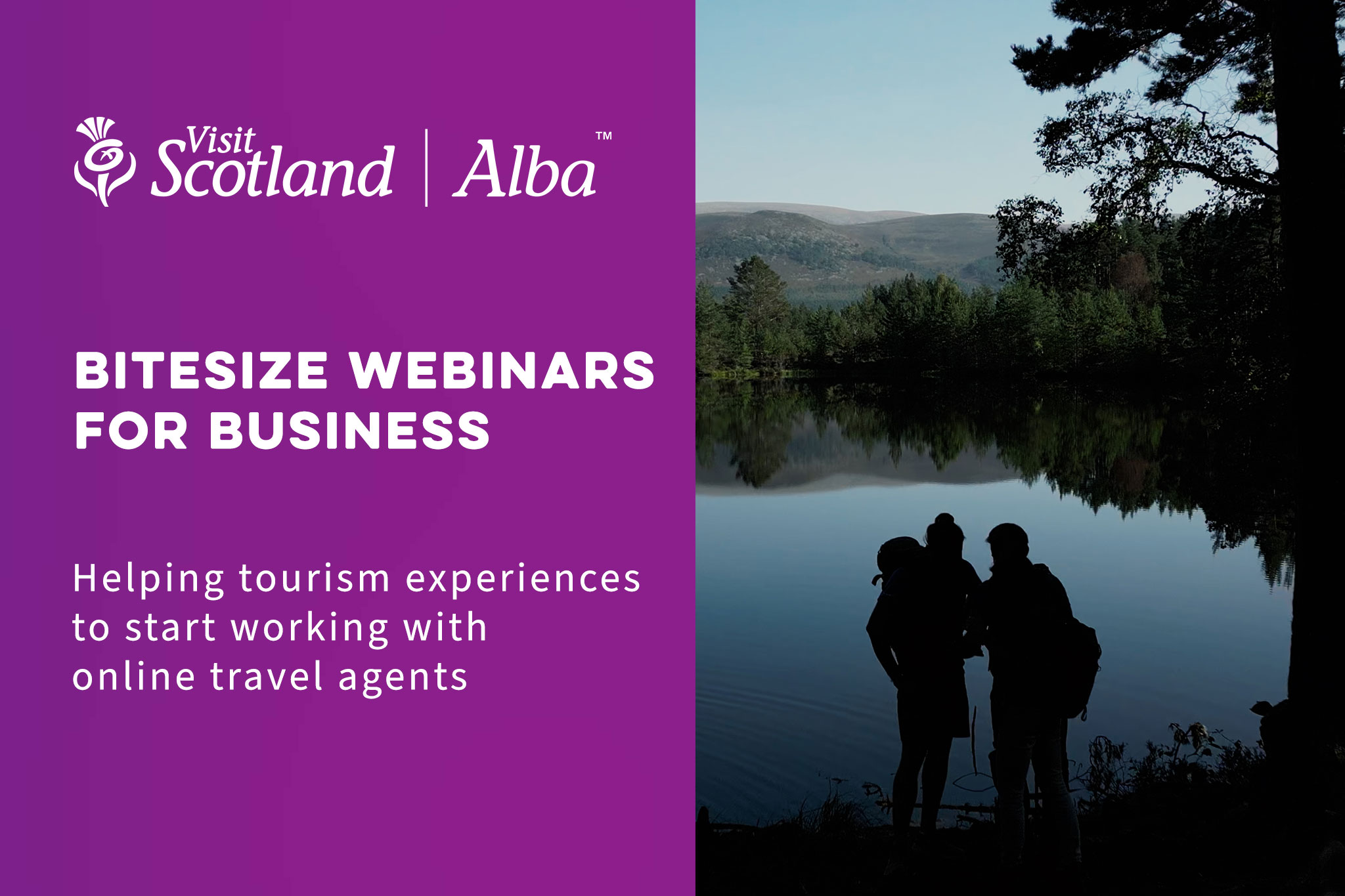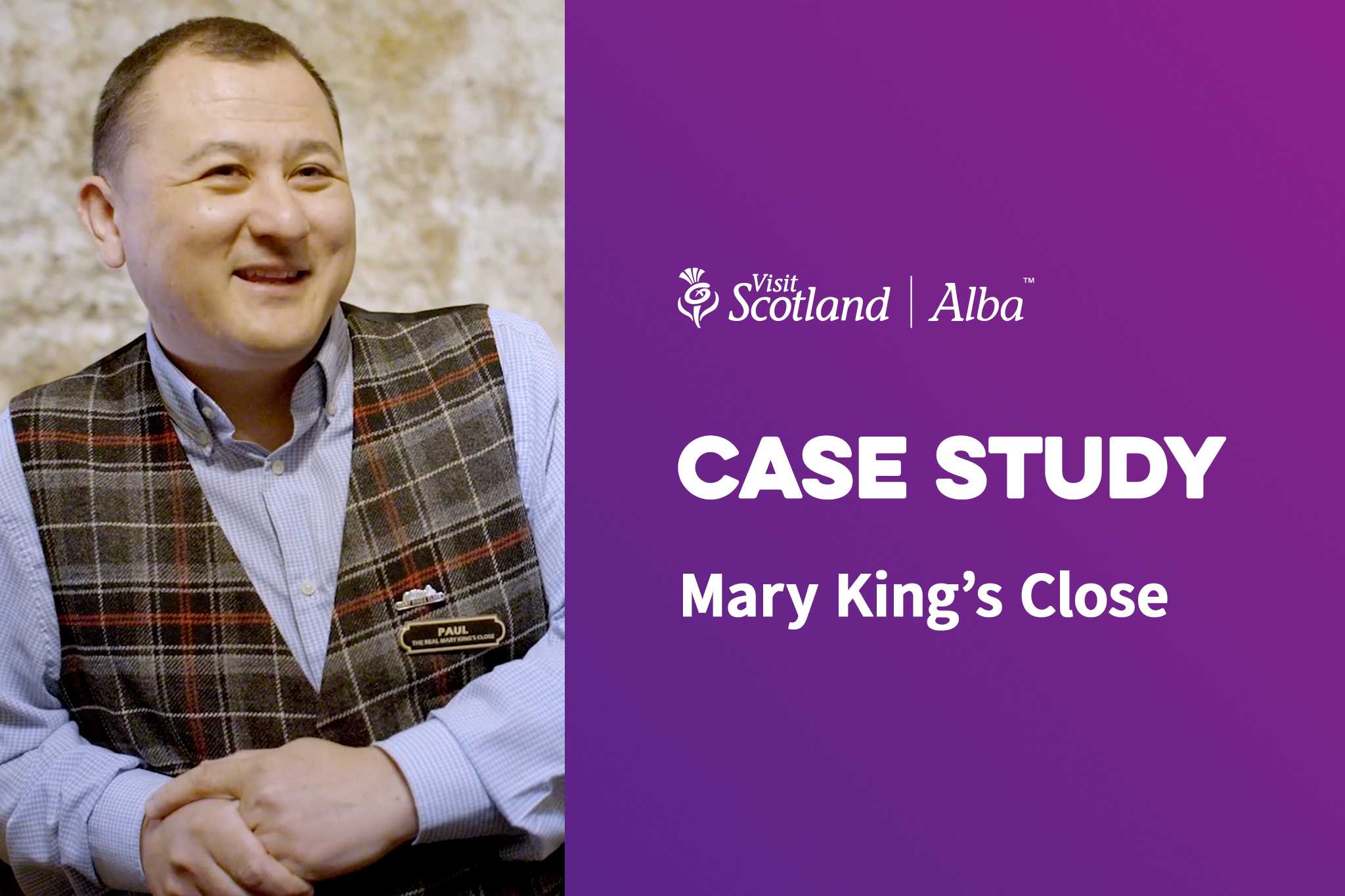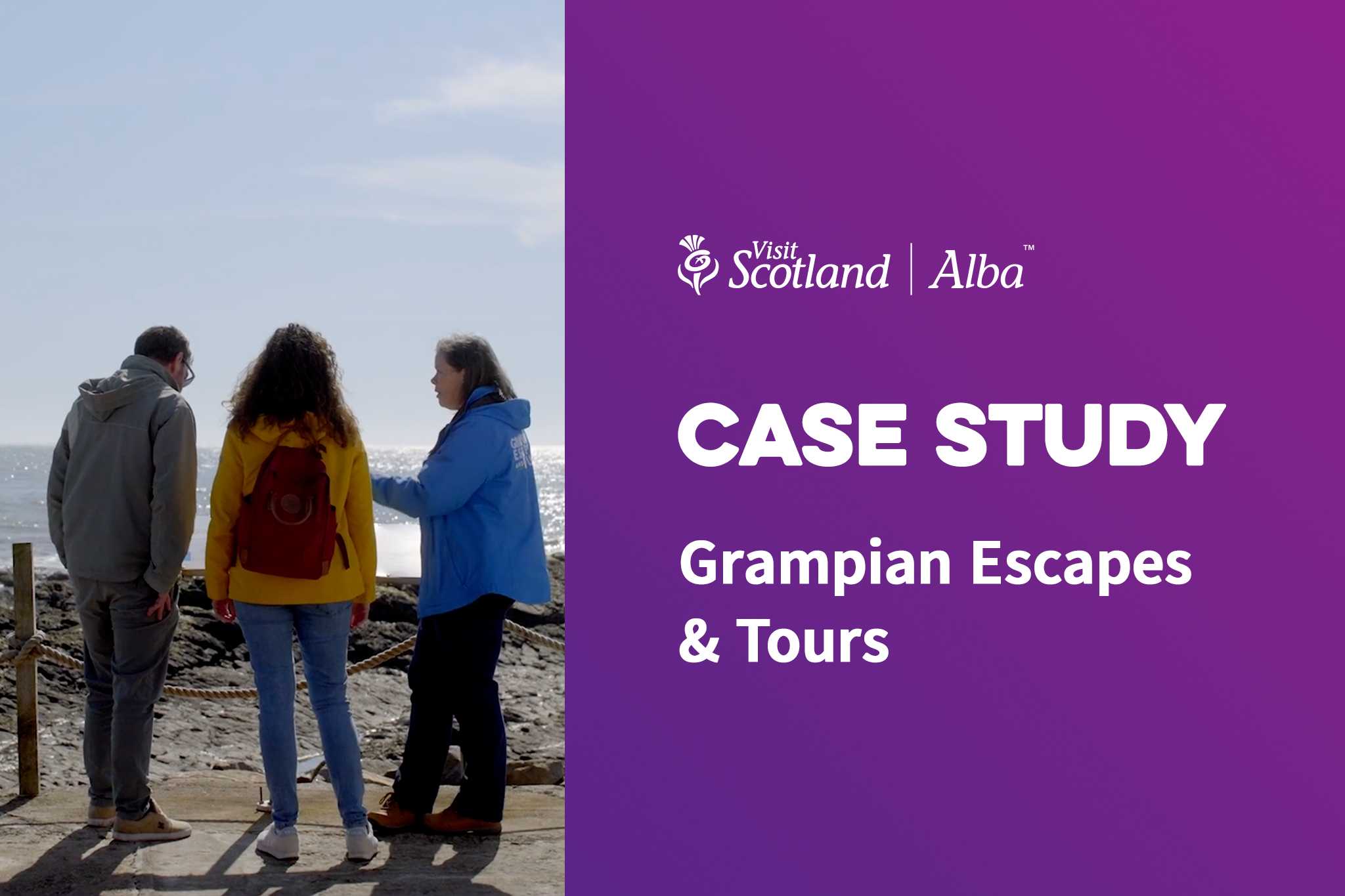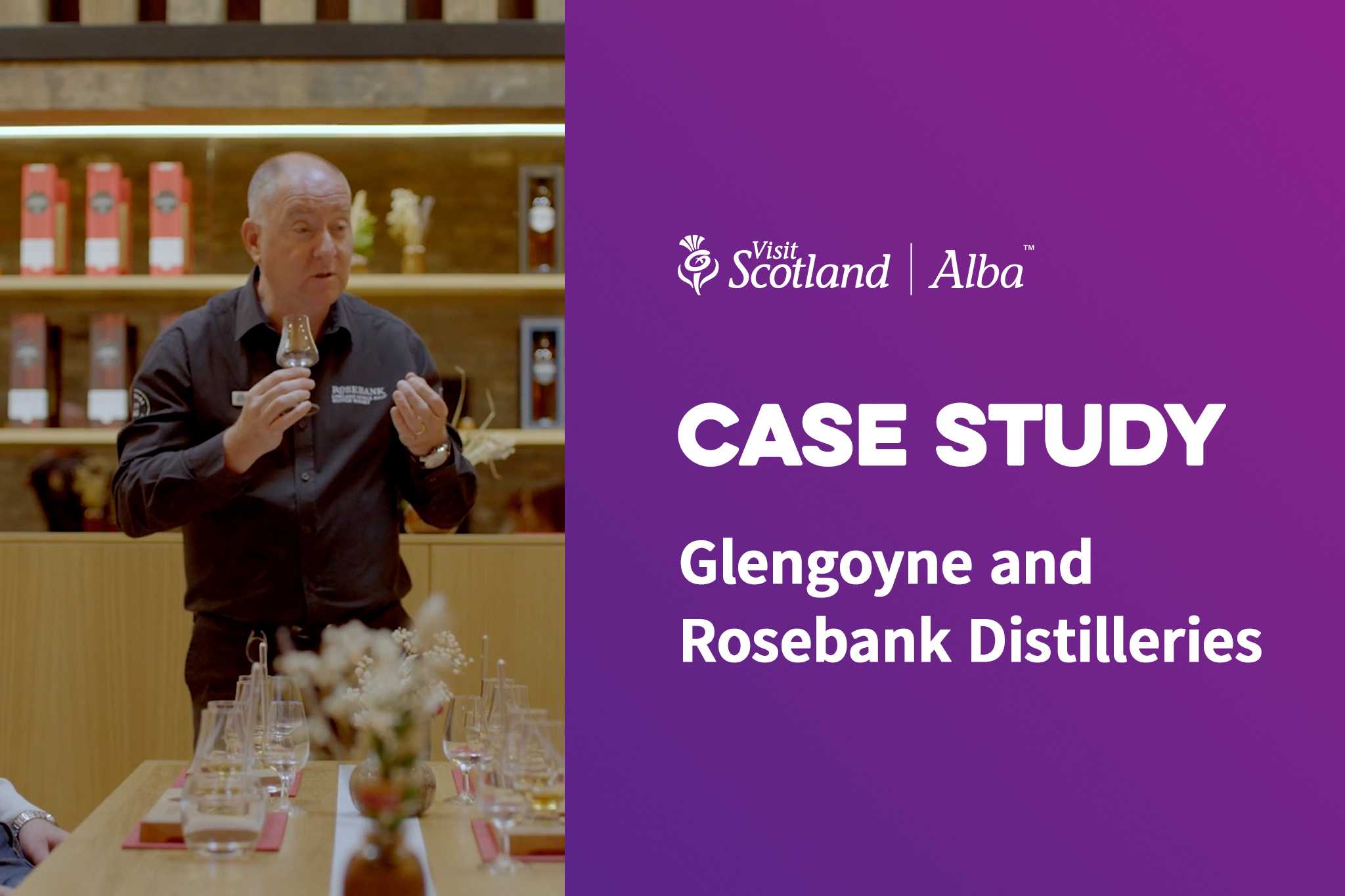OTAs take a commission for every booking made through their site.
The commission charged by an OTA is usually around:
- 15-20% for accommodation
- 15-30% for experiences
Online travel agents (OTAs) are companies who offer a range of travel products and packages including accommodation, tours, attractions and activities. Customers can easily search, compare and book products online.
Build your understanding of what an OTA is, how they work and the benefits of using them to sell your product. Look at how to choose the right OTA and how to set up your business listing. Walk through the steps to manage your listing and grow your business sales.
An OTA can:

Sorry, something's gone wrong. We can't display this content at the moment.
JavaScript needs to be enabled to watch this video. You can turn this on in your browser settings.
Discover how an online travel agent can increase bookings and profitability for your tourism experience business.

Sorry, something's gone wrong. We can't display this content at the moment.
JavaScript needs to be enabled to watch this video. You can turn this on in your browser settings.
Paul Nixon at Real Mary King’s Close shares how online travel agencies have become an essential part of their ticketing and guest experience strategy.

Sorry, something's gone wrong. We can't display this content at the moment.
JavaScript needs to be enabled to watch this video. You can turn this on in your browser settings.
Jacqueline van den Akker, head guide and director of Grampian Escapes & Tours, explains how online travel agencies have transformed the company.

Sorry, something's gone wrong. We can't display this content at the moment.
JavaScript needs to be enabled to watch this video. You can turn this on in your browser settings.
Liz Gunn, Head of Sales & Marketing, gives an inside look at how the team uses an online booking system to improve the visitor experience and more.
Many OTAs have big budgets to spend on marketing, and rank well on search engines due to their size, brand awareness and spend. A single business will struggle to compete on search engines against a large well-known organisation.
Listing your business on an online marketplace increases the size of your “shop window” – a customer is more likely to find you and notice what you have to offer.
There can also be a “billboard effect”, where a customer sees you on an online marketplace but later comes and buys from you directly.
OTAs can be a good way to cast your net further towards:
When you first start out, it will take time to set up your own website and social media channels and attract customers in to learn more. Working with an OTA could get you attention quicker, and feedback on what you’re offering.
Use an OTA listing to help sell leftover slots at the last-minute or push days when you tend to take less direct bookings.
A customer in a different time zone can make a booking with you during the night.
Customers can review and compare products and make reservations themselves.
Automated bookings so no need for manual customer service work, meaning more time for other things.
Customers can see how busy the product or service is and may be encouraged to commit quicker because of the popularity and limited availability.
Secure payment system accepting various options.
Capture customer data, preferences, and demographics which you can use to target and sell future products.
OTAs take a commission for every booking made through their site.
The commission charged by an OTA is usually around:
Lunan Bay Farm
Don't miss our upcoming travel distribution webinars this September.
Some OTAs may require a variation of your product that is unique to them. This avoids competition between direct and OTA sales. The variation may be small but needs to be distinct enough to make the OTA product unique – examples might be including merchandise, a meal option, or other.
Most OTAs will want to sell everything you offer – particularly you most popular products and timings.
Many OTAs do price checks on your website – your business might not perform as well as it could on the OTA if you offer a cheaper price through direct channels than you have given them. It’s much better to offer the variation on your product instead.
An OTA can purchase advertising space on a Google Business Profile, so that their rates appear alongside your own direct booking links.
Before you start browsing the OTA market, think about what you want to offer.
Look at your past sales data and your forecast for the future – what have you struggled to sell directly? What has sold well? An OTA will take a commission on each sale – so ideally you want them to focus on the products that you may not be able to sell directly, or the products they can sell at a higher price than what you can achieve directly.
Your booking system should be able to help provide historic sales data across your different channels, which lets you forecast expected sales.
You’ll have your price for selling directly to the customer, but you need to consider how you would factor in commission for an OTA.
The overall cost of your product or experience – if you’ve adapted the product for selling through a partner, you’ll need to recalculate the cost.
Any additional costs of selling through a partner – this could be your booking system charging a fee for connections to OTAs, or a bank transfer fee if the OTA pays you from a foreign bank account/
A price for the customer – what you would expect a customer to pay, which includes your product costs, the cost of selling through an OTA, and any potential commission.
A price for the OTA – this would be a price which covers your costs, but allows the OTA to add their commission and charge the customer a higher price.
A maximum percentage of commission - come up with a maximum percentage that you can accept that covers your costs and allows for a profit to be made. Do not accept any OTA contracts which go beyond that maximum percentage.
Example
Remember to include the cost of direct marketing when comparing the cost of selling directly versus selling through an OTA.
There are a few ways to create a list of potential OTAs to work with.
Who do your competitors work with?
If many similar businesses from your area are on an OTA, this means there is good demand for that type of business on that platform, so you would want to add them to your shortlist.
Location – if a customer comes to your town or area, they will be deciding where best to stay and what they want to do with their time. There can be a lot of competition across visitor attractions, activities, tours and events.
Interests or type of group – there is also competition between similar businesses as people only have a set amount of time and may have to choose between activities such as things to do for families, or customers interested in active pursuits or sustainable experiences.
Type and sector – everyone who offers the same product as you. This could be nearby or anywhere in Scotland, particularly if you offer a niche experience.
Reviews – when browsing the OTA, look out for businesses with the most reviews and the highest ratings. They may get more prominent placement from the OTA and will be seen by more customers. Look at what customers are commenting most on in the reviews. Is this something you could emulate? Remember – you can learn from other people’s negative reviews as well, and what you want to avoid.
Create a spreadsheet and document where you can list the benefits and challenges of each potential partner as you review their details.
Things to consider for each OTA:
Compare the results of the OTAs and select which one you want to work with.
Loch Katrine Experience
This would include:
Check out our tips on business listings for more advice.
Go onto their website and follow the information to create an account or claim your listing.
Fill in the fields on their system carefully and read it all over before you submit it. You can always make changes later but providing all the information carefully and comprehensively can help your listing get approved faster.
Many OTAs offer AI assistance to you when creating your listing. You can make use of these features, but always remember to read through everything you create before submitting it to make sure it is accurate, and reflects your product, business and brand correctly.
In some cases, the OTA will edit your submission to create their own version – this ensures there are no duplicate content issues which can mark down your search engine rankings.
This could happen really quickly – in just a few hours – or it may take several weeks, if you’ve forgotten to include some key information and they come back to you to request it.
Check over your listings every season.
You want to check over your copy and ensure it still reflects your product. Update the images and video regularly to give a recent insight into what it’s like to visit your business.
Make sure your availability is correct with dates and times.
Review your prices regularly – check if your costs have changed, consider if the price is set at the right level, and if you can enhance the product and therefore charge more.
Reviews are very important on an OTA – they are displayed prominently and used by customers to decide whether to visit a business or not.
Check if the OTA allows you to respond to feedback directly on the platform, and make use of this feature so the original customer gets a response, and everyone can see your attention to detail.
Check out our guide on how to manage customer feedback.
Every month, look at your:
Through your own analytics you can also review:
Adjust based on your findings – this might include ideas for incremental improvements to improve the overall quality of the experience, or more significant adjustments to your product, or new product ideas.
As well as the specific sales data, you may not have access to annual trends, general training or webinars, and other opportunities for support from the OTA. Make the most of what your partnership gives you access to and learn more about what your customers are looking for, and how you can meet their expectations.
Once a year, consider conducting a wider review. This might mean looking again at:
An online booking system is software that lets you take reservations and payments from customers online.
Find the right online booking system for your experiences business and make it easier to take and manage customer bookings.